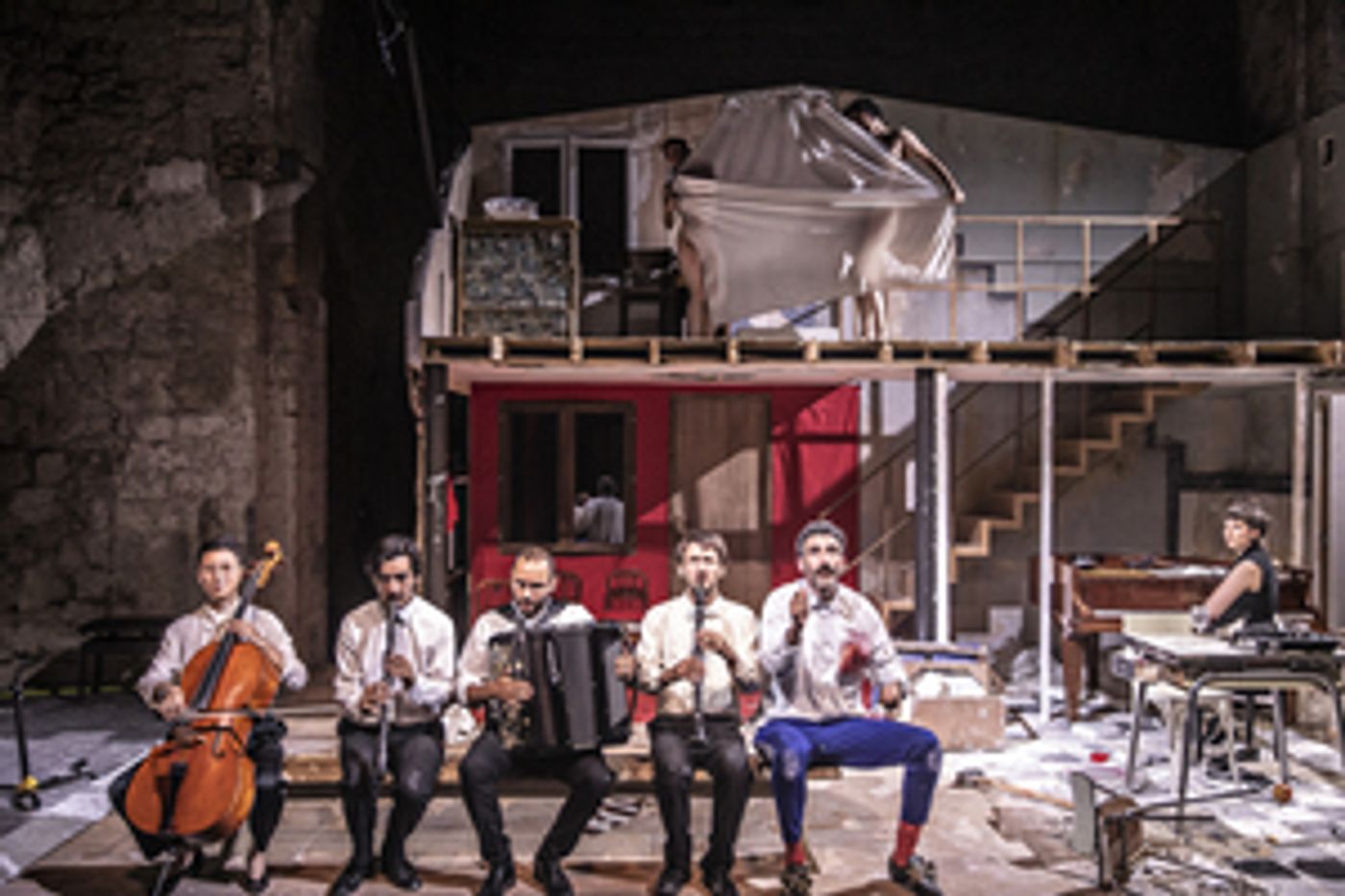Review: The Festival d'Avignon Presents SANS TAMBOUR By SAMUEL ACHACHE
Much like Schumann's lieds, the entire evening consists of pieced together fragments and the more these fragments broke apart, the clearer they became.

One possible translation of the city name "Avignon" would be "The Windy City." Avignon earned this name through an aggressive wind tunnel that begins in the Alps, shoots along the Rhone valley, and ends in the Mediterranean. The locals have named this weather event "le Mistral." In my previous Avignon experience, the Mistral has made limited cameo appearances. However, for the opening performance of Samuel Achache's Sans Tambour at the Festival d'Avignon's Cloître des Carmes, it became a leading player and watching the cast masterfully steer its way around this scene stealing diva became a foundational element to the evening's performance.
The program for Sans Tambour contains two biographies, that of director Samuel Achache and that of composer Robert Schumann. Schumann was a composer of Germany's Romantic era and is best known for his "lieds", short works for piano and voice. However, if you're looking for a straightforward Schumann song cycle, you're going to want to look further afield. According to an interview with director Achache, "The first pieces that our company staged came from a musical narrative, like an opera. (...) Today, we went further, in an attempt to find principles of musical writing which are intrinsically linked to dramatic action."
The audience enters in on scenographer Lisa Navarro's two-story set. This design features a large semi-opaque tarp, which connects the second and first floor, as if concealing a room for renovation. For the opening performance, this tarp battered back and forth like a sail, threatening to overturn the small bistro chairs that appeared to weigh it down. A team of musicians then enters the stage, under the musical direction of Florent Hubert. These musicians include Hubert on the saxophone and clarinet, Gulrin Choï on the cello, Antonin-Tri Hoang on the clarinet and alto saxophone, Sebastien Innocenti on the accordion, Eve Risser on the piano and flute, and singer Agathe Peyrat.
Actor Léo-Antonin Lutinier joins the musicians on stage. He takes out a small record and mimes putting it on a turntable. With Lutinier, and expert precision, the performers play out the experience of enjoying this lied first forwards then backwards, and both fast and slow. Following this prologue a couple, Sarah le Picard and Lionel Dray, make their dramatic entrance, battering out the walls of their florescent-light filled kitchen. They are not getting along. The couple fights, their loud argument cutting above the Mistral tempest to the back row of the Cloître seating. Atmosphere demanded a constant forte, so pianissimo would not do. A more delicate play might not have survived the buffeting.
The plot of Sans Tambour revolves around thematic revelation more than dramatic resolution. Achache's link between Romanticism and Surrealism is on frequent display. In one scene Léo-Antonin Lutinier sings in falsetto as the tarp is fastened to his head, as if undergoing brain surgery. A nurse in scrubs instructs him to sing as he drifts in and out of tune and in and out of consciousness. The other actors have their own Romantic burdens. Sarah le Picard sees all of her surroundings as a pathway, or dead end, to love. Her complaints are often underlined with singer Agathe Peyrat's joining in on her monologues, turning her convictions into operatic recitative. Lionel Dray is the resident cynic. "This wind is starting to piss me off!" he grumbled while trying to light his spoon with a match.
The musicians braced against the wind while anticipating minute cues from the actors they accompanied. Le Picard quietly leaned on a hollow set piece, stopping it from being swept away. Lionel Dray stood for some time on a broken piece of furniture, watching the evening's proceedings with rapt attention. Léo-Antonin Lutinier ambled about the production like Charlie Chaplin, executing vaudevillian stunts with a deadpan affect and laser precision, seemingly unaware that he should be bothered by anything. Costumes by Pauline Kieffer have a well-worn and satiric air. César Godefroy's lighting is mostly industrial, only becoming very poetic with the addition of neon during the final destruction of the set. Also, cheers to sound manager Julien Aléonard, stage manager Sarah Jacquemot-Fiumani, and general manager Maël Fabre for keeping it all together, the task couldn't have been easy.
Much like Schumann's lieds, the entire evening consists of pieced together fragments and the more these fragments broke apart, the clearer they became. Punched out walls allow for new sight lines, and set pieces were broken off and neatly laid offstage. In the end, the Styrofoam floating in the air, the plastic wine glasses scuttling along the stage, and pages of books drifting out of the cloister were fragmentary actors playing their role in Sans Tambour. That laughter filled the windswept theatre as often as these stage elements, speaks to the determination and perseverance of the performers.
Reader Reviews

Videos


